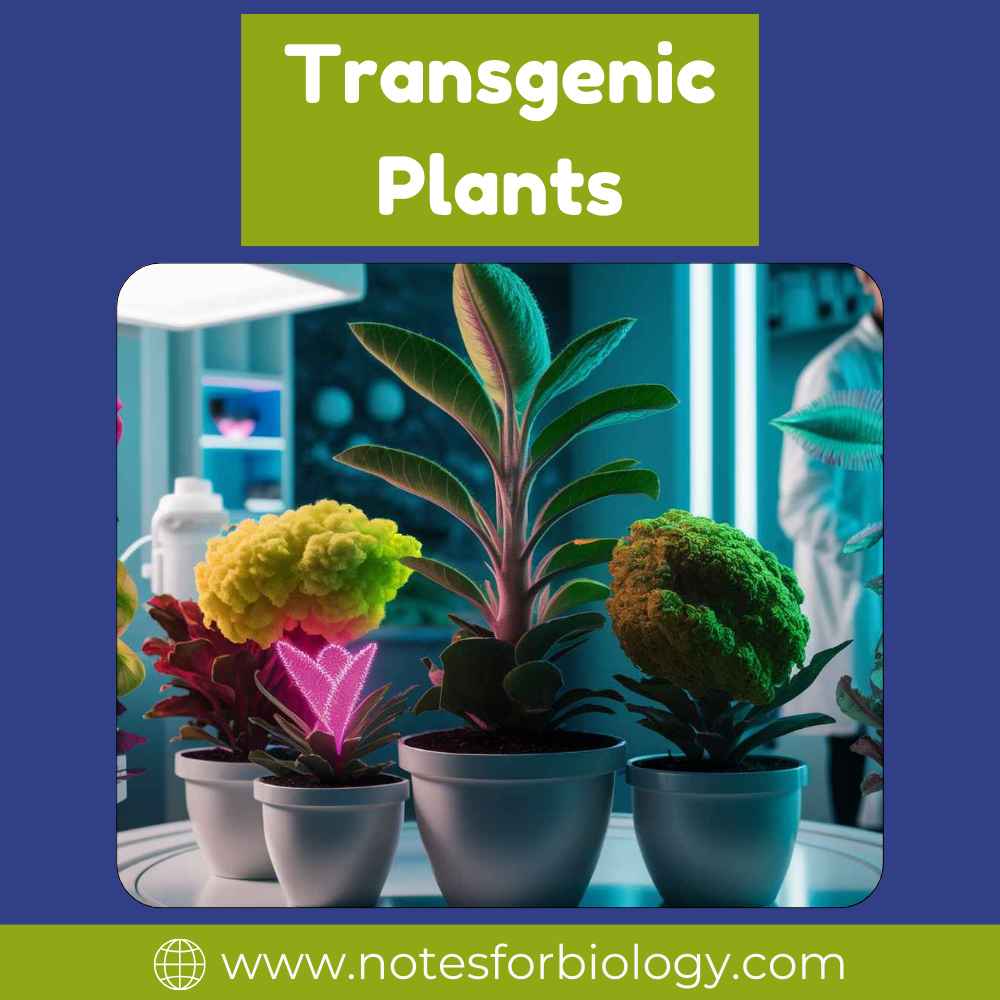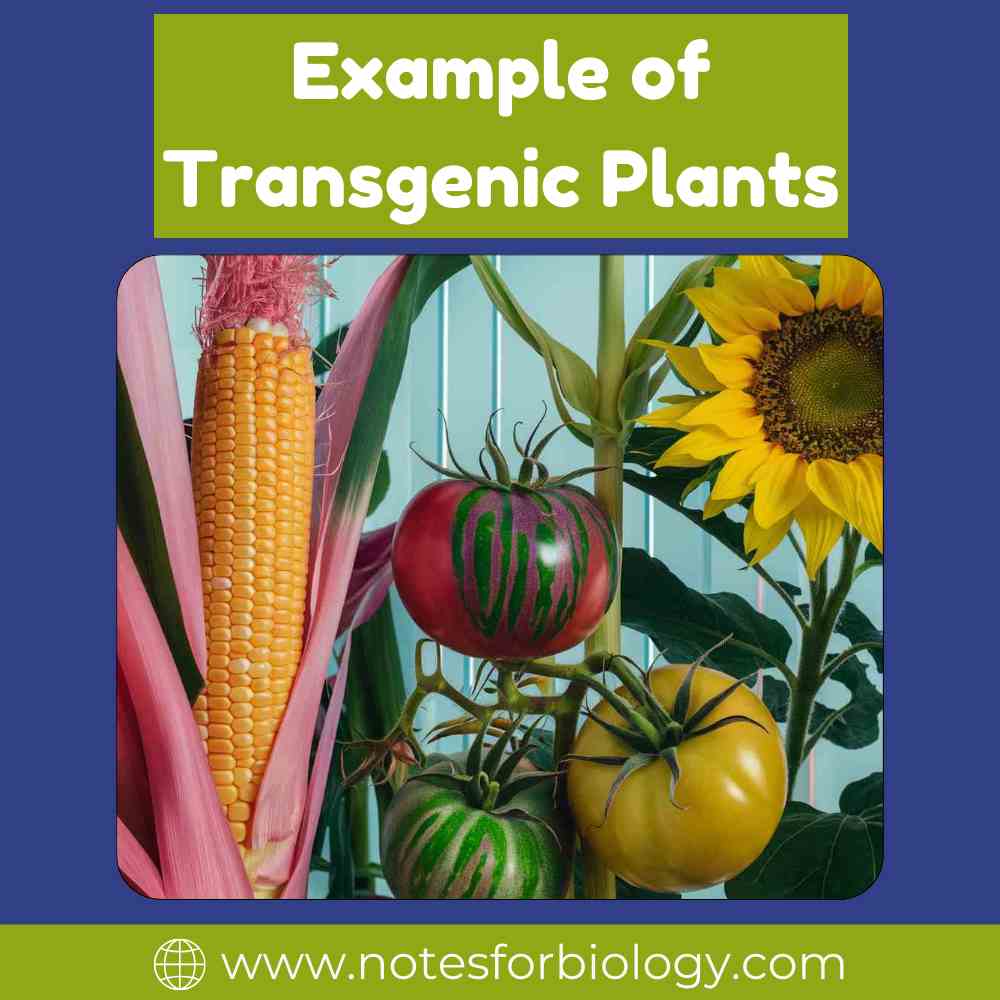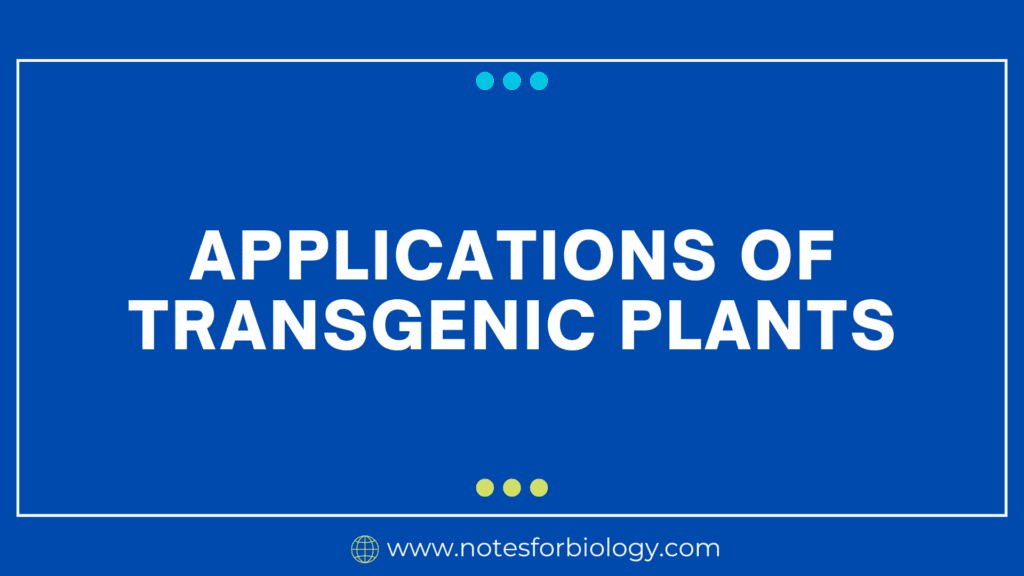Transgenic plants, commonly referred to as genetically modified (GM) plants, are plants that have undergone modifications through genetic engineering in order to incorporate particular traits that are not naturally occurring in the species. The introduction of desired traits like resistance to diseases and pests, increased nutritional value, faster growth rates, and tolerance to environmental stressors is made possible by these modifications. By lowering the need for chemical fertilizers and pesticides, raising crop yields, and addressing nutritional deficiencies, the development of transgenic plants has completely changed the agricultural industry.
Table of Contents
Historical Context and Development of Transgenic Plants

The origins of transgenic plants can be found in the groundbreaking genetic engineering research, which began with the 1950s discovery of DNA structure. Gene manipulation began in the 1970s with the development of recombinant DNA technology. The first transgenic plants successfully created through Agrobacterium-mediated transformation occurred in the 1980s. With crops like the Flavr Savr tomato, commercialization got underway in the 1990s. Transgenic plants, which provide solutions for pest resistance, herbicide tolerance, and enhanced nutritional content, have gained widespread acceptance despite regulatory and public debates. With an emphasis on sustainability and tackling global issues like food security and climate change, innovations like CRISPR/Cas9 technology are reshaping the future of transgenic plants.
Applications of Transgenic Plants
1. Agricultural Improvements
- Pest Resistance: Bacillus thuringiensis produces proteins that are toxic to certain insect pests. These proteins are produced by transgenic plants, such as Bt corn and Bt cotton. This raises crop yields and lessens the need for chemical pesticides.
- Herbicide Tolerance: Roundup Farmers can more successfully control weeds without endangering their crops thanks to the modification of ready soybeans and maize to withstand particular herbicides.
- Disease Resistance: To help lower agricultural losses, certain transgenic plants are made to be resistant to bacteria, fungus, and viruses. As an illustration, papayas that have undergone genetic modification are immune to the papaya ringspot virus.
2. Enhanced Nutritional Content
- Biofortification: To address nutritional deficiencies, transgenic crops are enriched with vitamins and minerals, such as Golden Rice. The goal of Golden Rice is to lessen vitamin A deficiency in developing nations by increasing the production of beta-carotene, a precursor to vitamin A.
- Improved Micronutrient Content: It is possible to genetically modify plants to produce more of certain vital vitamins, like C and E, which will increase the crops’ overall health benefits.
- Combatting Malnutrition: Variants designed to boost beta-carotene, iron, and folate levels all at once, addressing multiple nutrient deficiencies.
3. Environmental Benefits
- Reduced Chemical Use: Transgenic plants with traits for disease and pest resistance can lessen the need for chemical fungicides and pesticides, reducing environmental contamination and encouraging environmentally friendly farming methods.
- Phytoremediation: To help with environmental cleanup efforts, certain transgenic plants are designed to absorb and detoxify pollutants from soil and water.
4. Industrial Uses
- Biopharmaceutical Production: It is possible to produce pharmaceutical substances like therapeutic proteins, vaccines, and antibodies in a scalable and economical way by using transgenic plants. It is possible to genetically modify plants to produce substances like insulin and other therapeutic proteins.
- Biomaterials and Biofuels: Transgenic plants can be engineered to generate biofuels, biodegradable plastics, and industrial enzymes, offering environmentally friendly substitutes for conventional industrial processes.
5. Scientific Research
- Model Systems: Transgenic plants are useful models for researching the regulation and function of genes, the growth of plants, and the consequences of genetic engineering. A model organism commonly used in plant biology research is Arabidopsis thaliana.
- Functional Genomics: By modifying the genetic makeup of transgenic plants, researchers can examine the functions of particular genes and regulatory components in a range of biological processes, such as metabolism, stress responses, and plant growth.
6. Improved Crop Quality and Yield
- Enhanced Growth and Stress Tolerance: Higher crop yields can be achieved by engineering transgenic plants to grow more quickly, produce more biomass, and withstand stresses like salinity, drought, and extreme temperatures.
- Shelf Life Extension: By postponing the ripening and spoiling of fruits and vegetables, genetic modifications can save post-harvest losses and increase the shelf life of crops.
Benefits of Transgenic Plants
- Enhanced food security and agricultural productivity.
- A decrease in the application of chemical herbicides and pesticides, supporting the sustainability of the environment.
- Possibility to enhance public health and lessen nutritional deficiencies.
- Economical manufacturing of industrial materials and medications.
Examples of Transgenic Plants

- Bt cotton and corn: These plants have undergone genetic modification to yield Bacillus thuringiensis (Bt)-produced insecticidal proteins that are poisonous to some pests, including cotton bollworms and corn borers.
- Golden rice: To generate beta-carotene, a precursor to vitamin A, Golden Rice is genetically engineered. Lack of vitamin A can cause blindness and make you more vulnerable to infections, which is a serious health problem in many underdeveloped nations.
- Arctic Apples: Arctic Apples have undergone genetic modification to stop browning when they are cut or bruised.
- Rainbow Papaya: Through genetic engineering, the papaya ringspot virus (PRSV), which decimated papaya farms in Hawaii in the 1990s, has been rendered immune to the rainbow papaya.
In addition: The advancement of genetic engineering and its use in agriculture can be seen in the creation of transgenic plants. They have revolutionized agricultural methods, offering options to raise crop yields, improve nutritional content, and promote sustainability. This transformation has occurred from the earliest genetic discoveries to the most advanced genome editing technology of today. They have the potential to be extremely important in addressing future global concerns as science and technology advance.
Frequently Asked Question(FAQ)
Which is the first transgenic plant?
In 1982, Tobacco was the first transgenic plant to develop resistance to antibiotics.
What are some examples of transgenic plants?
Examples include Roundup Ready soybeans, Golden Rice, Bt corn and cotton, Innate potato, Arctic apple, and rainbow papaya.
Related Articles

